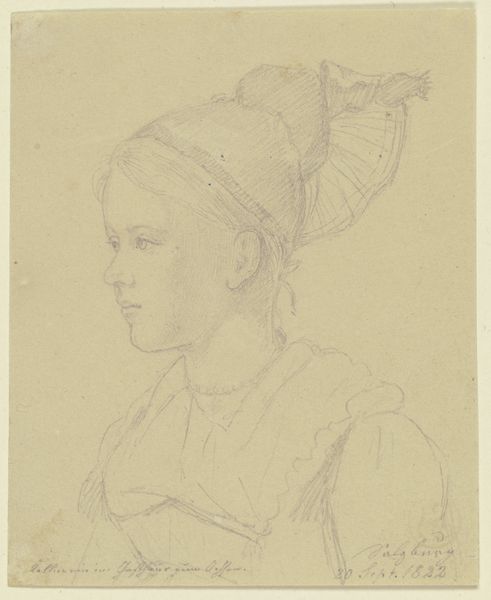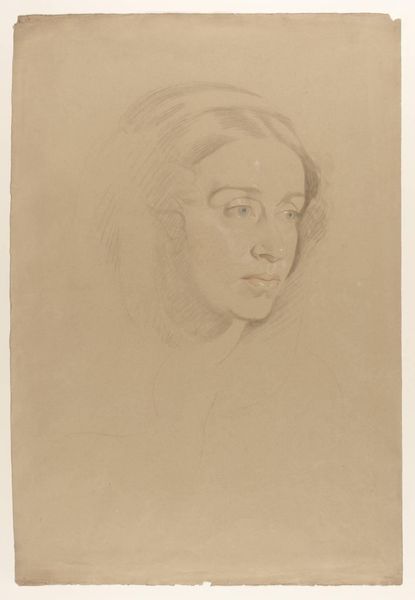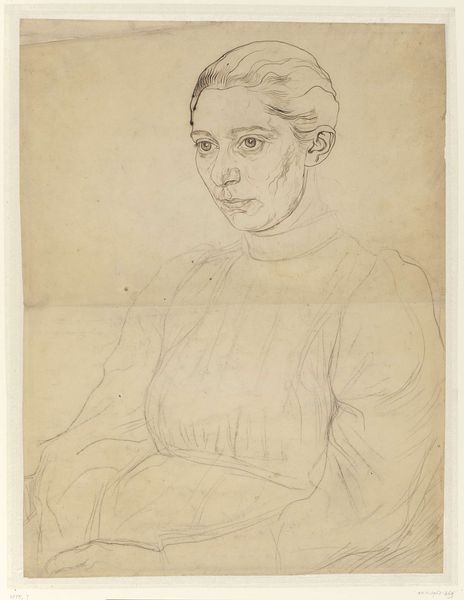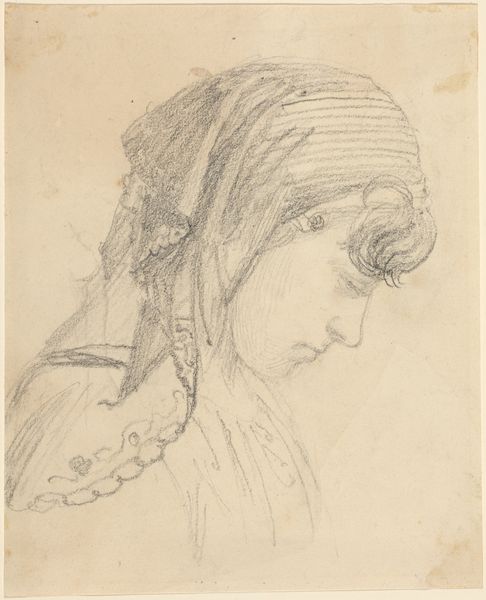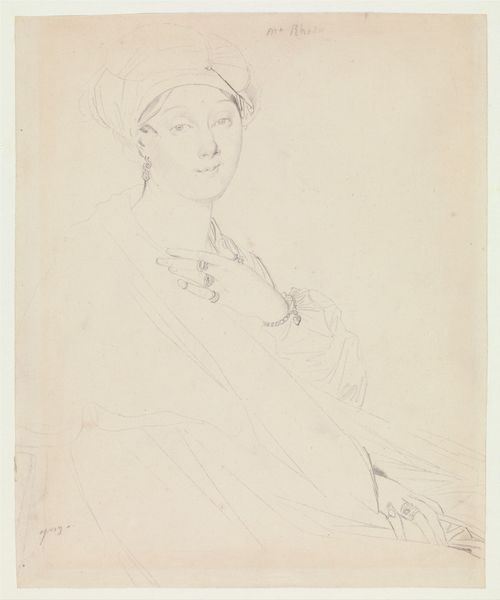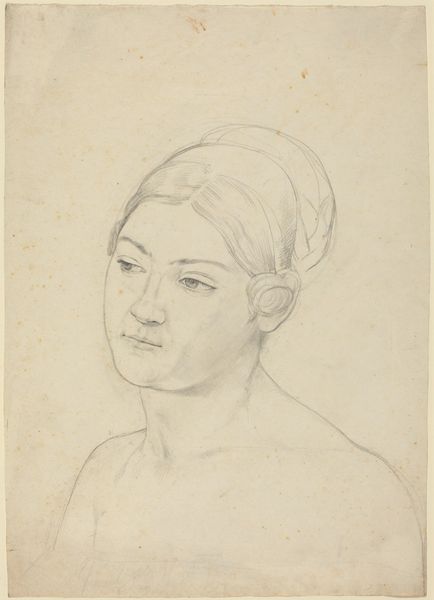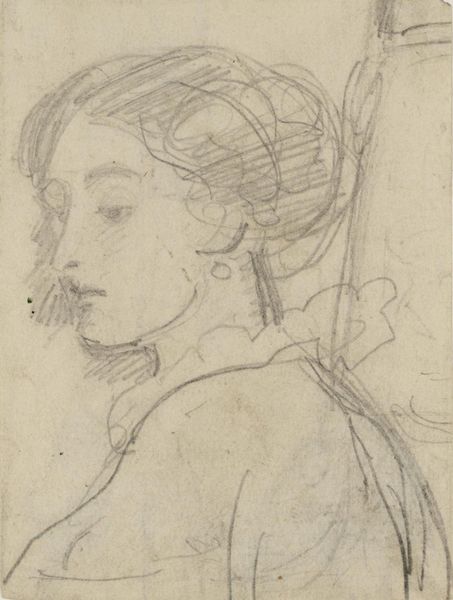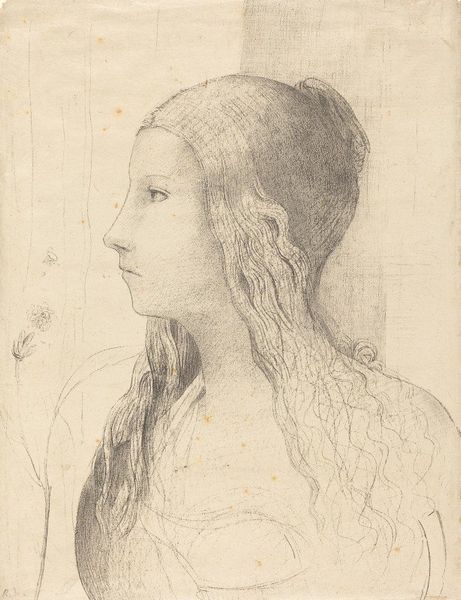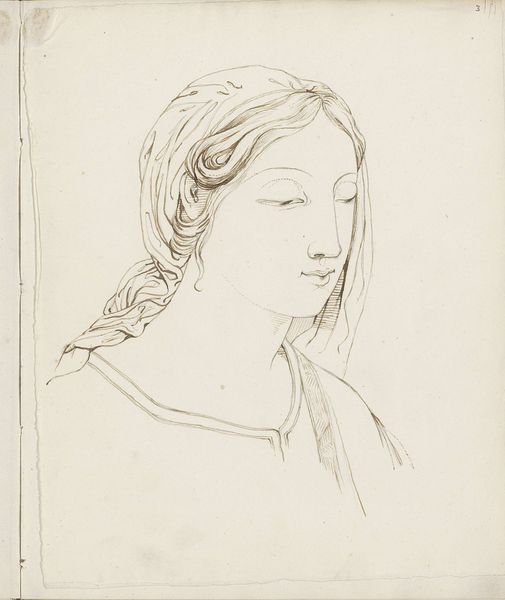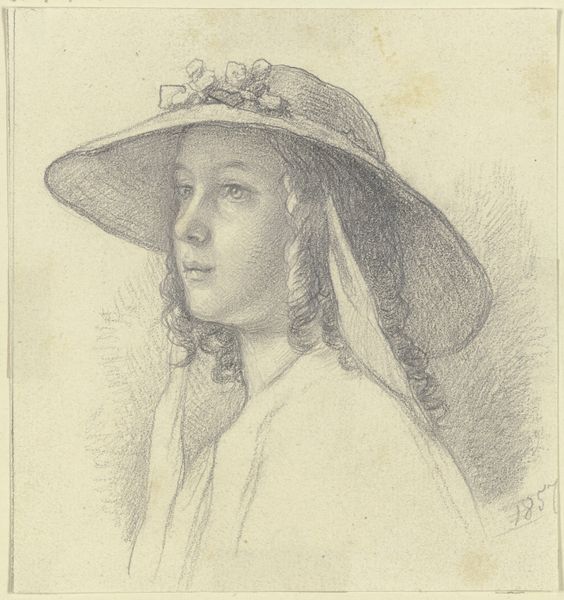
drawing, pencil, graphite
#
portrait
#
drawing
#
self-portrait
#
pencil sketch
#
figuration
#
pencil drawing
#
pencil
#
line
#
graphite
#
portrait drawing
Dimensions: overall: 27 x 22.1 cm (10 5/8 x 8 11/16 in.)
Copyright: National Gallery of Art: CC0 1.0
Curator: Standing before us, we have Gwen John’s Self-Portrait, likely sketched between 1907 and 1909. It's a lovely piece rendered in pencil, graphite, on paper. What are your first thoughts? Editor: There's a stillness that emanates from this self-portrait—almost an ethereal quality. The muted palette and the delicate lines evoke a sense of introspection, perhaps even a hint of melancholy. Curator: Indeed, Gwen John’s work often possesses that quietly observant character. I wonder if that shadow falling dramatically over half her face is a hint of this? Shadow as symbolism? Editor: That shadow could represent several things. Darkness falling across her face hides things, turning the face into a half-mask. The obscured features could signal something repressed, the part of herself she wants to hide. Curator: She seemed to favour a limited tonal range, almost like a whispered secret. I've read she destroyed many of her paintings because they were too loud, or too bold for her, in some way. Editor: Interesting you say that. Consider how, traditionally, portraiture serves to immortalize and elevate the sitter. Yet here, in its unassuming modesty, we witness a rebellion against grandiose representation. The hat on the head has that sense as well. A simple sketch can tell its story so profoundly. Curator: Right. John’s work counters this grandstanding impulse, turning towards capturing interior states rather than physical resemblance alone. It's quite captivating, especially in comparison to the bravado and grand pronouncements we see among some of her contemporaries. Editor: Precisely! I’m reminded of certain monastic orders that strip everything away to expose pure devotion. John seems to engage in something similar here. Stripping away embellishment to show, if not pure devotion, then pure essence. It’s a very internalised mode. Curator: Ultimately, what we are left with is an extraordinarily vulnerable and beautifully rendered peek into the artist’s inner self. It encourages a kind of reflective quietness. Editor: And it reminds us that the truest portrayals are not always the loudest or most flamboyant, but those rendered with genuine honesty and simplicity.
Comments
No comments
Be the first to comment and join the conversation on the ultimate creative platform.
